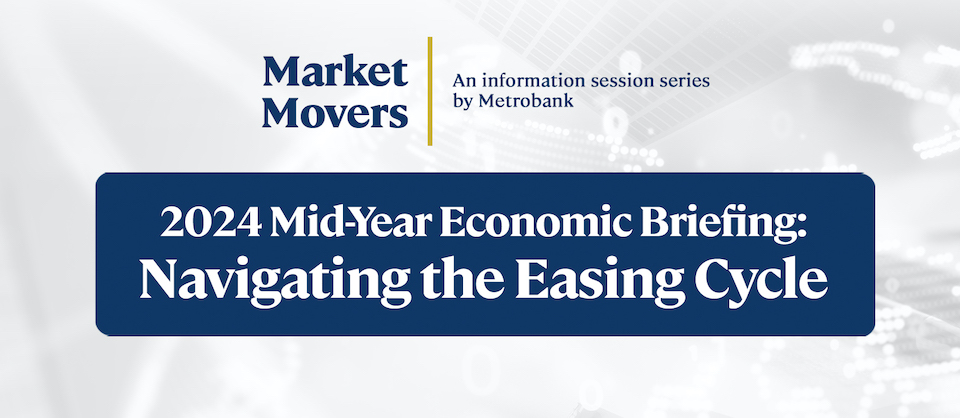Ever wondered why bond prices and yields move in opposite directions? This article explains why.
 FEATURED INSIGHTS
FEATURED INSIGHTSBonds are the backbone of any diversified portfolio, yet the inverse relationship between their prices and yields is often the first thing that trips up new investors.
Understanding this is required to manage a fixed-income allocation successfully. In this article, we take away some of the jargon and explain this relationship for Wealth Insights readers.
What exactly is a bond
Think of a bond simply as a sophisticated IOU. When a government (like the Republic of the Philippines) or a corporation needs to raise capital, they issue a bond. By purchasing that bond, you, the investor, are lending them money for a set period.
In exchange for your capital, the issuer commits to two things: paying you scheduled interest over the life of the loan (the coupon payments) and returning your original principal (the face value) on a specified maturity date.
It’s a fixed-income instrument because, unlike stocks, the income stream is typically predictable.
Important bond terms
To speak the language of fixed income, you need to know these three terms:
- Face Value (Par Value): This is the principal amount, usually PHP 1,000 or PHP 10,000 that the issuer guarantees to pay back at maturity.
- Coupon Rate: This is the original, fixed annual interest rate. It’s set when the bond is issued via an auction and never changes. A PHP 500,000 bond with a 6% coupon will always pay PHP 30,000 a year in interest. However, the frequency of coupon payments varies per bond.
- Bond Price: This is the current market price at which the bond is trading. It is important to remember that while the Face Value is fixed, the market price constantly moves in response to supply, demand, and changes in the economic environment.
Understanding bond yield
While the coupon rate tells you the original cash flow, the bond yield tells you your actual rate of return if you bought the bond today.
The most important measure is the Yield to Maturity (YTM), which effectively calculates the total return you can expect if you hold the bond until it matures, considering the price you paid, the fixed coupon payments, and the final principal repayment. In simple terms, the yield is the bond’s income relative to its current price.
Relationship of bond price and yield
Here’s the core concept: Bond prices and yields always move in opposite directions. Why? Because the annual coupon payment is a fixed, unchangeable cash flow.
When you buy a bond in the secondary market, you’re buying that fixed stream of cash flows. The only factor that can adjust the rate of return on that fixed cash flow stream is the price you pay for it.
- When Interest Rates Rise: If the central bank (or the market) drives interest rates higher, new bonds being issued will offer higher coupons. This makes existing bonds with lower coupons less desirable. To lure a buyer, the seller of the older bond must drop the market price. By buying the bond at a lower price (discounted price), the new investor is paying less for the same fixed interest payments, which naturally increases their effective yield.
- When Interest Rates Fall: The reverse happens. New bonds offer lower coupons. An existing bond with a higher coupon suddenly becomes a hot bond pick. Investors bid the price up (premium price) to own that desirable cash flow. Because the new investor paid a higher price for the same fixed interest, their effective rate of return, or yield, decreases.
The market is simply a mechanism that uses the price to ensure the yield on older bonds remains competitive with the yields on newly issued bonds.
Learn more about the relationship of interest rates and bond prices here
Let’s look at an example
To better understand the inverse relationship between bond prices and yields, consider a RTB 5-19 (5-year bond) with a 6% coupon rate: if prevailing interest rates rise to 7%, the bond price falls to 95; if rates drop to 5%, the price increases to 105.
| Scenario | Prevailing Market Rates | Bond Price | Current Price | Face Value | Approx. YTM |
|---|---|---|---|---|---|
| Original Issue | 6% | 100 (Par) | PHP 500,000 | PHP 500,000 | 6.00% |
| Rates Rise | 7% | 95 (Discount) | PHP 475,000 | PHP 500,000 | 7.18% |
| Rates Fall | 5% | 105 (Premium) | PHP 525,000 | PHP 500,000 | 4.88% |
For illustration, assume interest rates increase by 7% (or decrease by 5%), causing bond prices to fall to 95 when rates rise and rise to 105 when rates fall. The figures above are for
illustration purposes only.
The bond’s return is represented by the Approximate Yield to Maturity (YTM), which is calculated using the formula that incorporates the fixed annual coupon payment and the annualized capital gain or loss realized at maturity. The formula is:
YTM = [ C+ (FV – PV) ÷ t ] ÷ [ (FV + PV) ÷ 2 ]
Where:
YTM – Yield to Maturity
C – Annual Coupon Payments
FV – Face Value
PV – Present Value
t – Time
When prevailing market interest rates rise to 7%, the bond trades at a discount, with a price of PHP 475,000 (computed as 95% of the PHP 500,000 face value). This results in a higher yield-to-maturity (YTM), calculated as: YTM is 7.18% = [ 30,000 + (500,000 – 475,000) ÷ 5 ] ÷ [ (500,000 + 475,000) ÷ 2 ]. The increase in YTM reflects the investor’s compensation for purchasing the bond below par.
Conversely, when market rates fall to 5%, the bond trades at a premium, priced at PHP 525,000 (105% of the PHP 500,000 face value). The YTM decreases accordingly: YTM is 4.88% = [ 30,000 + (500,000 – 525,000) ÷ 5 ] ÷ [ (500,000 + 525,000) ÷ 2 ]. This lower YTM reflects the reduced return due to the bond being purchased above par.
Understanding the inverse relationship between bond prices and yields is fundamental to successfully managing a fixed-income allocation. Whether you’re navigating rising yields that signal better buying opportunities or seeking defensive strategies when rates fall, having an expert guide is essential.
For more bespoke financial solutions and to provide essential Wealth Insights, reach out to your investment specialist or relationship manager today. Not a client yet? Visit us at any Metrobank branch so you can begin your wealth journey with us.
(Disclaimer: This is general investment information only and does not constitute an offer or guarantee, with all investment decisions made at your own risk. The bank takes no responsibility for any potential losses.)
Matthew Apostol is an Investment Counselor within Metrobank’s Institutional Investors Coverage Division, where he specializes in creating bespoke financial solutions for high-net-worth individuals, leveraging his experience in investment sales and a strong understanding of financial markets. He began his career at Metrobank as a Management Trainee, building a solid foundation in the financial sector. Matthew holds a Bachelor of Science in Business Economics and is currently pursuing a Master in Applied Economics at De La Salle University.







 DOWNLOAD
DOWNLOAD






 By Matthew Apostol
By Matthew Apostol